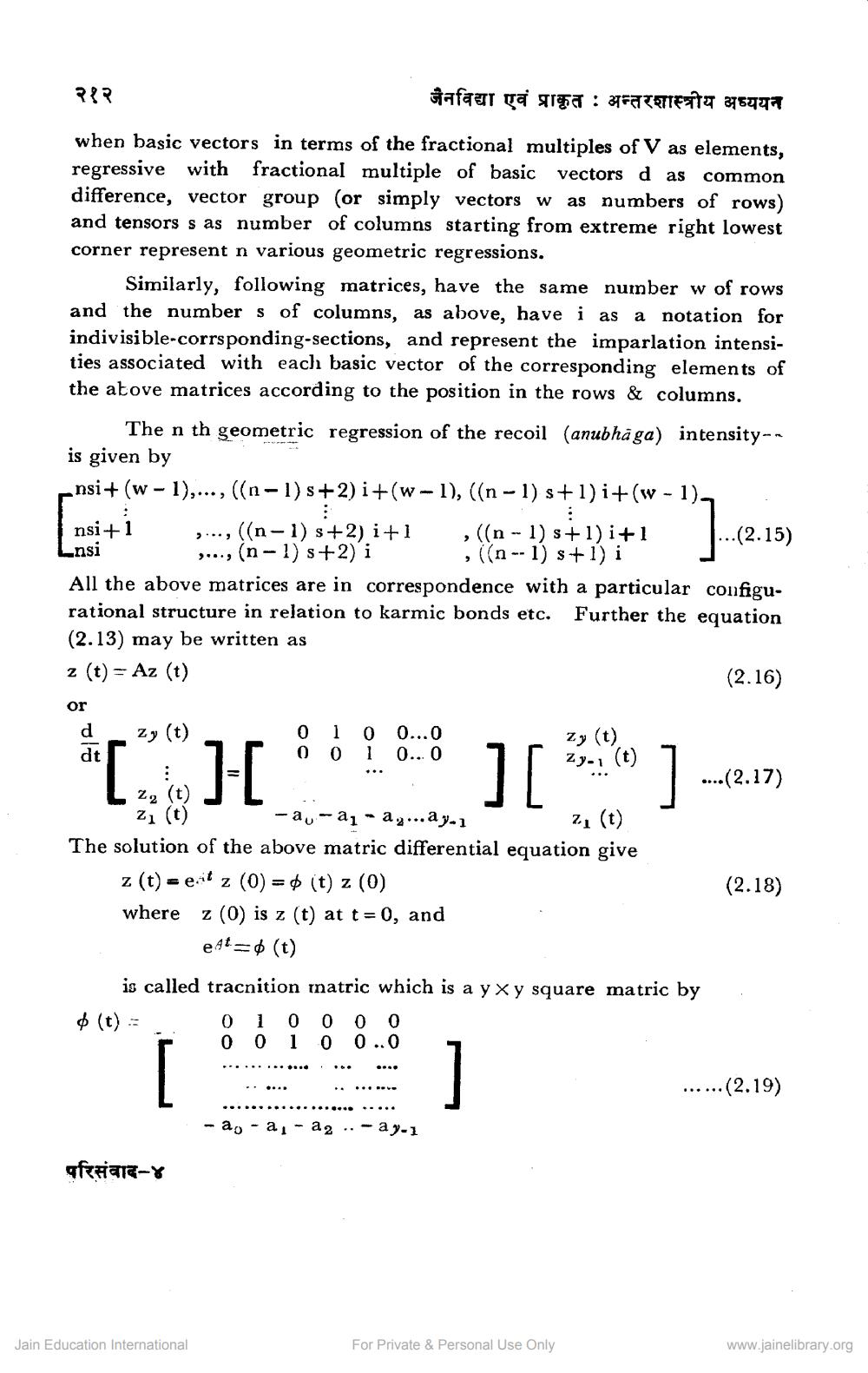Book Title: On Contribution Of Jainology To Indian Karm Structures Author(s): L C Jain, C K Jain Publisher: Z_Jain_Vidya_evam_Prakrit_014026_HR.pdf View full book textPage 7
________________ २१२ जैनविद्या एवं प्राकृत : अन्तरशास्त्रीय अध्ययन when basic vectors in terms of the fractional multiples of V as elements, regressive with fractional multiple of basic vectors d as common difference, vector group (or simply vectors was numbers of rows) and tensors s as number of columns starting from extreme right lowest corner represent n various geometric regressions. Similarly, following matrices, have the same number w of rows and the numbers of columns, as above, have i as a notation for indivisible-corrsponding-sections, and represent the imparlation intensities associated with each basic vector of the corresponding elements of the atove matrices according to the position in the rows & columns. The n th geometric regression of the recoil (anubhāga) intensity-- is given by nsi+ (w – 1),..., ((n-1) s+2) i+(w – 1), ((n-1) s+1)i+(w - 1), . nsi +1 ..., ((n-1) s+2) i+1 ((n-1) s+1)i+1 ... (2.15) Lnsi ..., (n-1) s+2)'i ((n -- 1) s+1) i All the above matrices are in correspondence with a particular configurational structure in relation to karmic bonds etc. Further the equation (2.13) may be written as 2 (t) = Az (t) (2.16) or d zy (t) dir ?, (t) 0 0 1 0 0 1 0...O 0...0 Zy (t) 2y-(t) 7 ....(2.17) L2, (t) zi(t) -a, -a, -a,...ay. 2 2 (t) The solution of the above matric differential equation give z (t) = e.it z (0) = 0 (t) z (0) where z (0) is z (t) at t=0, and eft=(t) (2.18) is called tracnition matric which is a y x y square matric by $(t) = .. 0 1 0 0 0 0 0 0 1 0 0.0 ...... (2.19) -a, -a, -22 ..-ay-1 परिसंवाद-४ Jain Education International For Private & Personal Use Only www.jainelibrary.orgPage Navigation
1 ... 5 6 7 8 9 10 11 12 13 14 15
